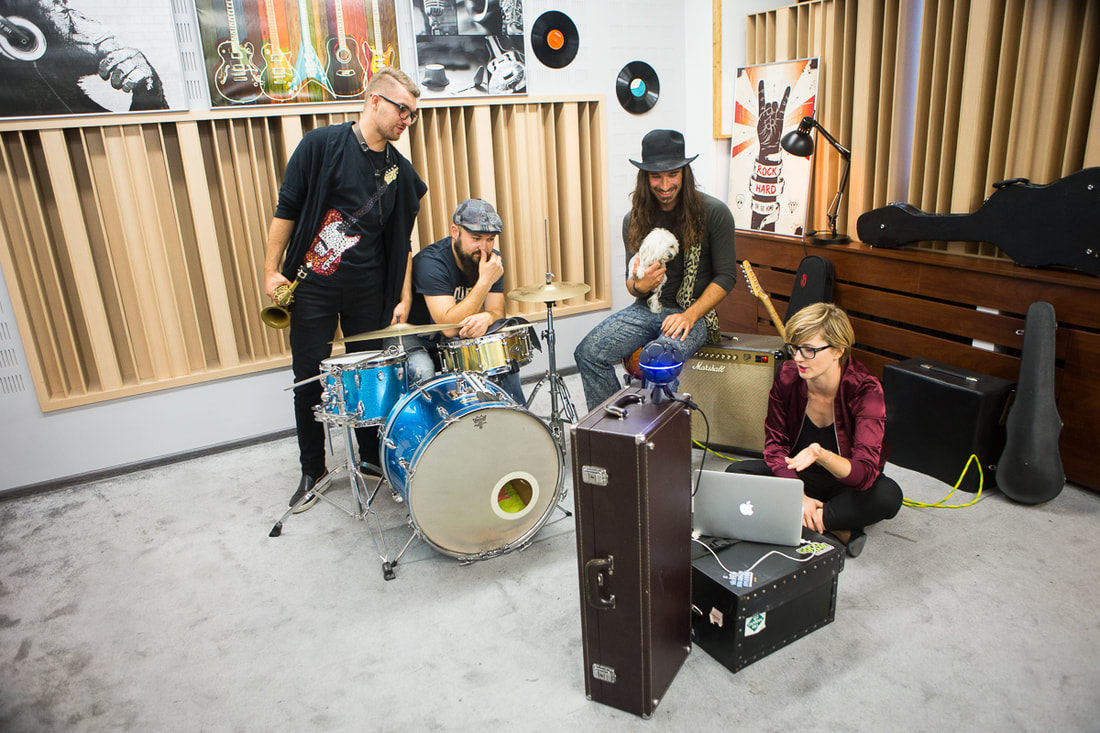|
Organizing rehearsals is much easier nowadays than it was in the past. Songwriters and musicians can easily rent a rehearsal room, join together and take part in the jam session. But how to achieve a great rehearsal recording without spending too much time on technical issues? First, you need to know is what happens with the audio signal that goes to the recording device. The terms 'conversion' and 'converter' are crucial here. Band rehearsal recorded with ZYLIA ZM-1. Conversion of the audio into a digital formThe audio which comes from a microphone or directly from an instrument to the interface is actually a series of electric signals of varying voltage, which represent acoustic sounds. These signals are converted into a series of numbers (by the analogue-to-digital converter), which correspond to the specific values of the voltage. This process is called conversion, digitalization or sampling. To be more detailed, digitalization is collecting a great number of snapshots (samples) of changing voltage values in equal time intervals. You can visualize this by comparing this process with a film stock which consists of many still photographs taken with the camera at the specific time frame. Depending on the sampling frequency set, these snapshots are taken at different time intervals. For example, at 44.1kHz the analog-to-digital converter takes one sample every 1 / 44,100th of a second. It mins that it takes 44,100 samples representing the voltage every one second and converts them into appropriate numbers which can be stored in the digital form. The audio signal recorded in this form, in order to be reproduced, must go ‘way back’ – so it needs to be converted into the analog signal, which will again be a variable electrical voltage. This process takes place in the digital-to-analog converter. Audio bit depthIn digital audio ‘bit depth’ is the number of bits of information in each sample, and it directly corresponds to the resolution of each sample. To simplify, we can assume that the sampling frequency are values assigned in time and the bit depth are values assigned to the strength of the signal. As it was already mentioned, in the 44.1kHz system, the audio-to-digital converter takes 44,100 samples per second. So, in the 48kHz system it is going to be 48,000, and so on. Increasing this value allows capturing more information about the sound which equals higher sound frequencies. This simply means that high-frequency instrument components can be better reproduced. On mastering process, it is significant to operate on full band samples where low and high-frequency components are well heard. It is easier to mask some instruments by others in the same acoustic scene. Taking care of high sample frequency, you can guarantee your listeners’ natural timbre and feelings. High sample frequency and bit resolution recordings are strongly recommended in compression, equalization and many additional audio effects. Standard configurations are 16 bits depth and 44,1k Hz sample frequency called CD standard. More advanced audio processing may require higher parameters. Important!If you neglect to configure high bit resolution a quantization noise will appear in your recording. It is an understandable effect since sound samples will be represented by an insufficient number of bits.
In audio mastering process, the quantization noise prevents engineer to operate on well-recorded sound frequencies. Low bit depth frequency components are much distorted than the high bit. When mastering operator mix rehearsals with noise, the final record contains strengthened noise, which may be onerous for the listener and difficult to accept in professional audio production.
2 Comments
|
Categories
All
Archives
August 2023
|
|
© Zylia Sp. z o.o., copyright 2018. ALL RIGHTS RESERVED.
|



 RSS Feed
RSS Feed
